- Continue Shopping
- Your Cart is Empty
Quick, Fresh Mozzarella Cheese Recipe
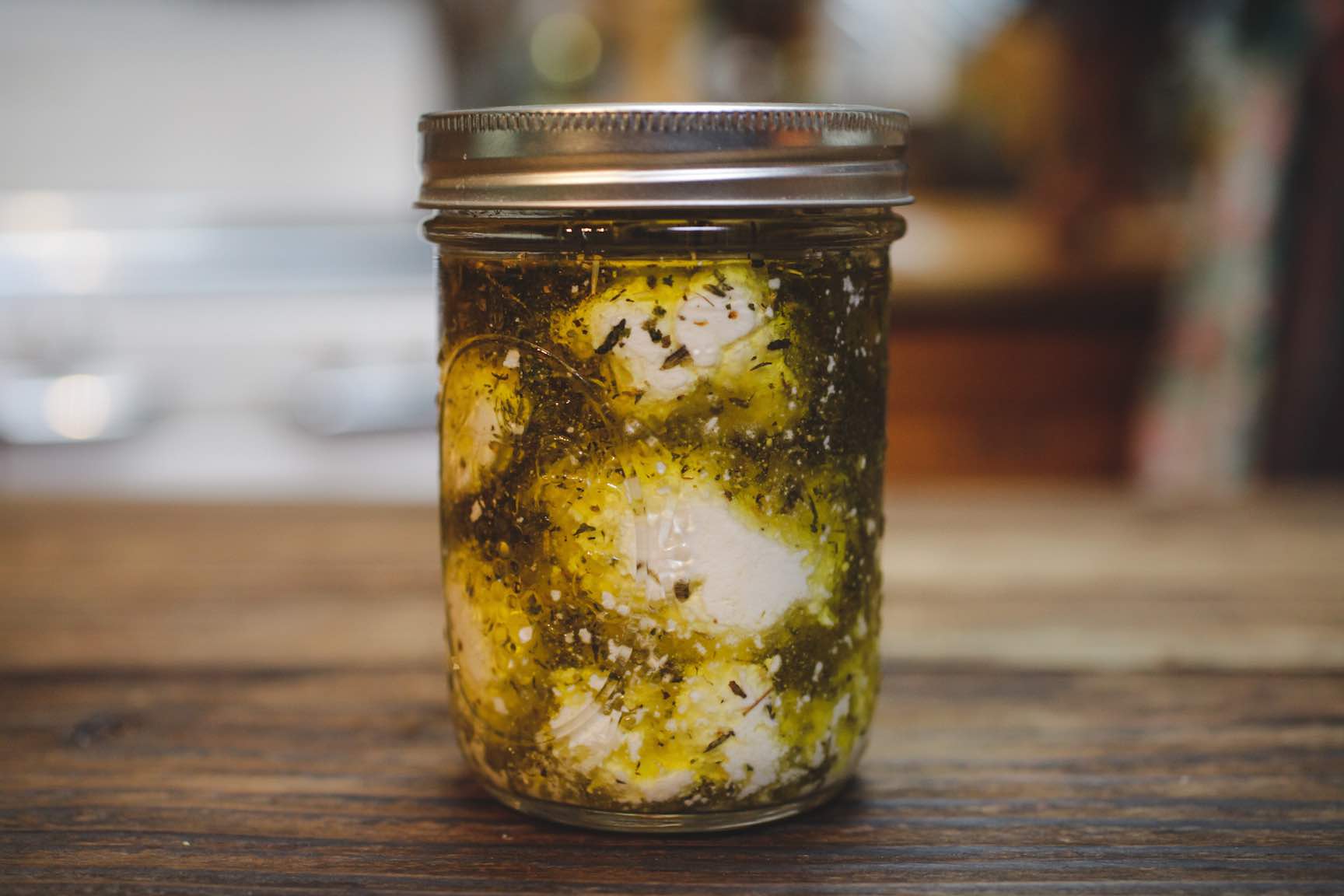
What You'll Need
Ingredients
- 1 1/2 teaspoons citric acid, dissolved in 1/2 cup cool water
- 1 gallon pasteurized whole milk, NOT Ultra-pasteurized
- 1/4 rennet tablet, or 1/4 teaspoon liquid rennet, dissolved in 1/4 cup cool, unchlorinated water (see rennet options here)
- 1/4 cup cheese salt
Equipment
- Stainless steel stock pot
- Dairy thermometer
- Perforated ladle
- Heavy gloves or large spoons, for kneading curd
Mozzarella, originally made from sheeps milk, and then from water buffalo, has undergone many changes since it was first introduced in Naples, in the early 16th century. The original recipe calls for a long, slow ripening, with the action of thermophilic bacteria creating the acidity that causes whey to separate from the milk proteins.
Commercial mozzarella is still made that way today, from the milk of cows, sheep, yes and even still some water buffalo, which produce the creamiest, richest cheese. This extended ripening process fully develops the flavors and contributes to the characteristic ‘stretched’ texture, and can take upwards of 5 hours to complete.
For those that desire a quicker method of making mozzarella, we offer this recipe for “30 Minute Mozzarella" from Ricki Carroll, the Cheese Queen.
Full disclosure: This recipe often takes me longer than 30 minutes to complete; but I suppose 45 Minute Mozzarella, or Hour-Long Mozzarella, just don’t have the same ring. Or perhaps I just move a little slower than the Cheese Queen. At any rate, the results are delicious, and certainly worth the time.
Directions

1. Add Citric Acid to Milk
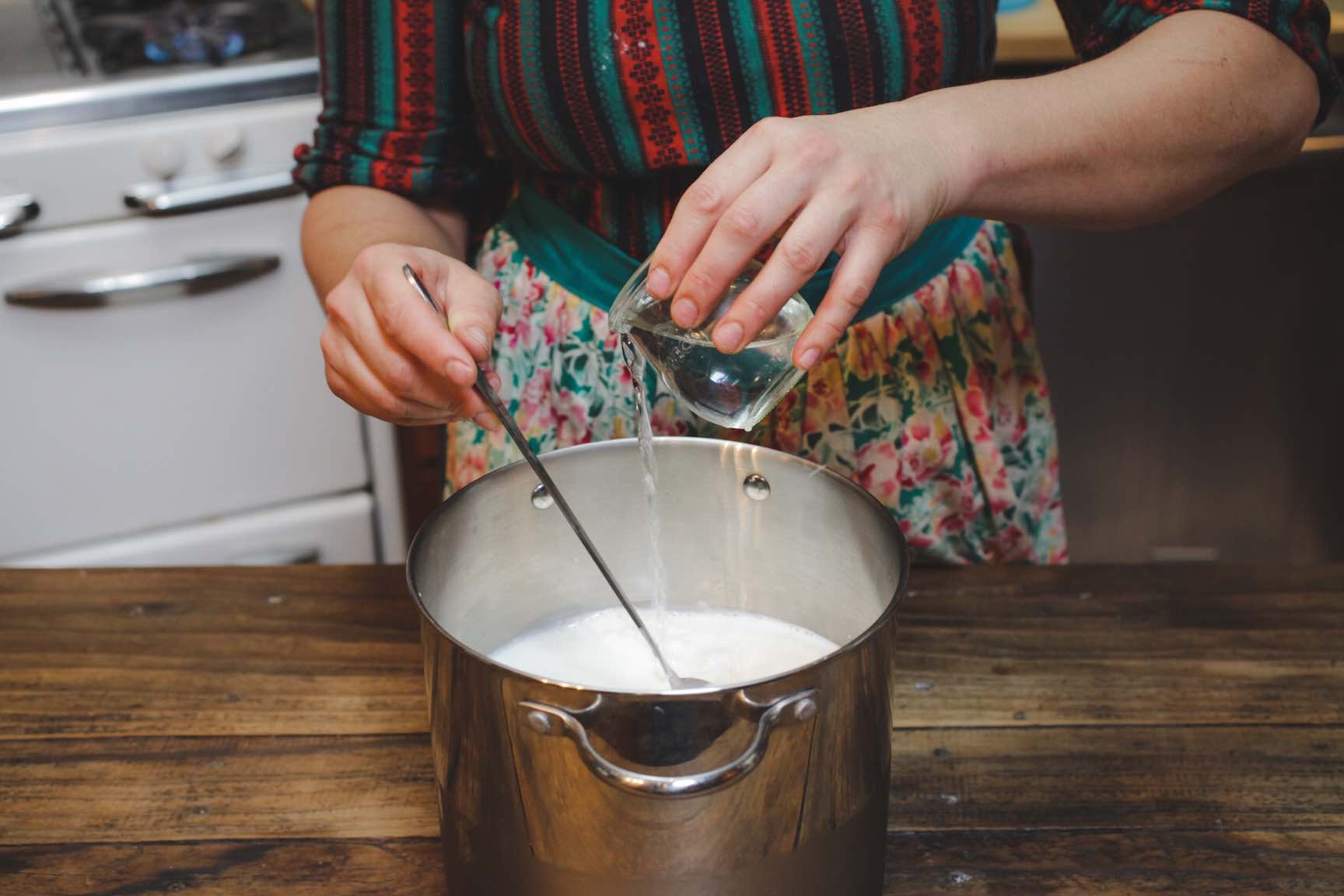
Dissolve the citric acid in water. While stirring briskly, add it slowly to the milk at 55 degrees, and mix throughly. It’s important to distribute the citric acid evenly and quickly, to avoid curdling the milk. Stirring briskly while pouring the citric in slowly does the trick, and isn’t as counter-intuitive as it seems.
2. Heat Milk and Add Rennet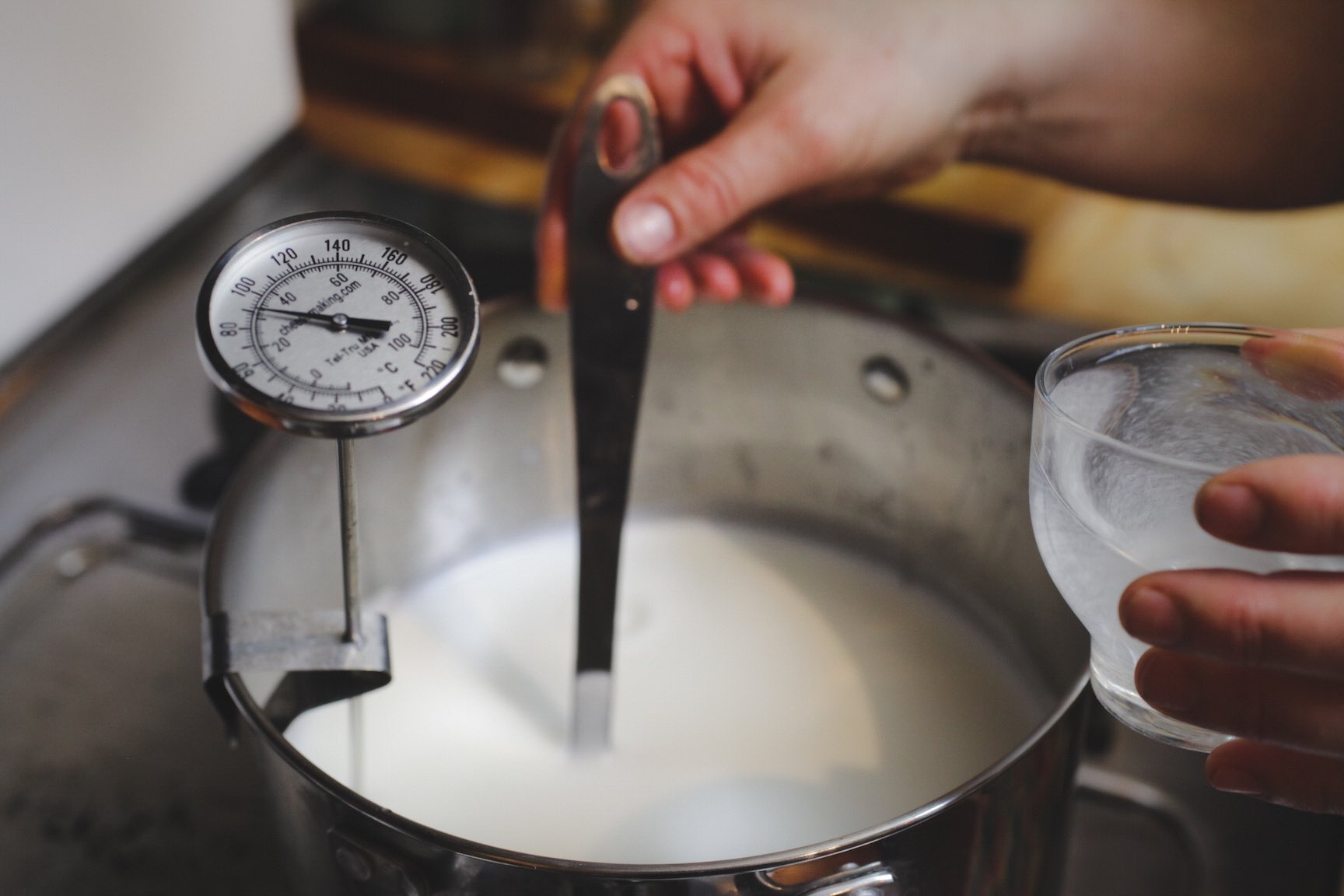

Dissolve the rennet tablet in the cool water.
Heat the milk to 90 degrees, stirring constantly. Remove the pot from the heat and slowly stir in the diluted rennet with an up-and-down motion for about 30 seconds. You want to mix it in throughly, but not stir it after the rennet has acted on the milk. The up-and-down motion is used to avoid creating a whirlpool effect in the milk, which could result in uneven distribution of rennet in the milk.
3. Cover and Leave for 5 Minutes
Cover the pot and leave undisturbed for 5 minutes.
4. Check the Curd
Check the curd. It should look like custard, with a clear separation between the curd and whey. If the cure is too soft, or the whey is too milky, let it set for a few more minutes.
Note: If the curd is granular, and not forming a custard-like consistency, don’t panic! It may be that the citric acid was unevenly distributed throughout the milk, or that the milk has been pasteurized at too high a temperature, even if it was not labeled Ultra-pasteurized. These curds, while not ideal, can often still l be used to make cheese, although the stretch will not be as elastic and the final texture will be softer than a traditional mozzarella. Skip the cutting stage, and proceed to heat the milk to 110°F.
5. Cut the Curd and Continue Cooking
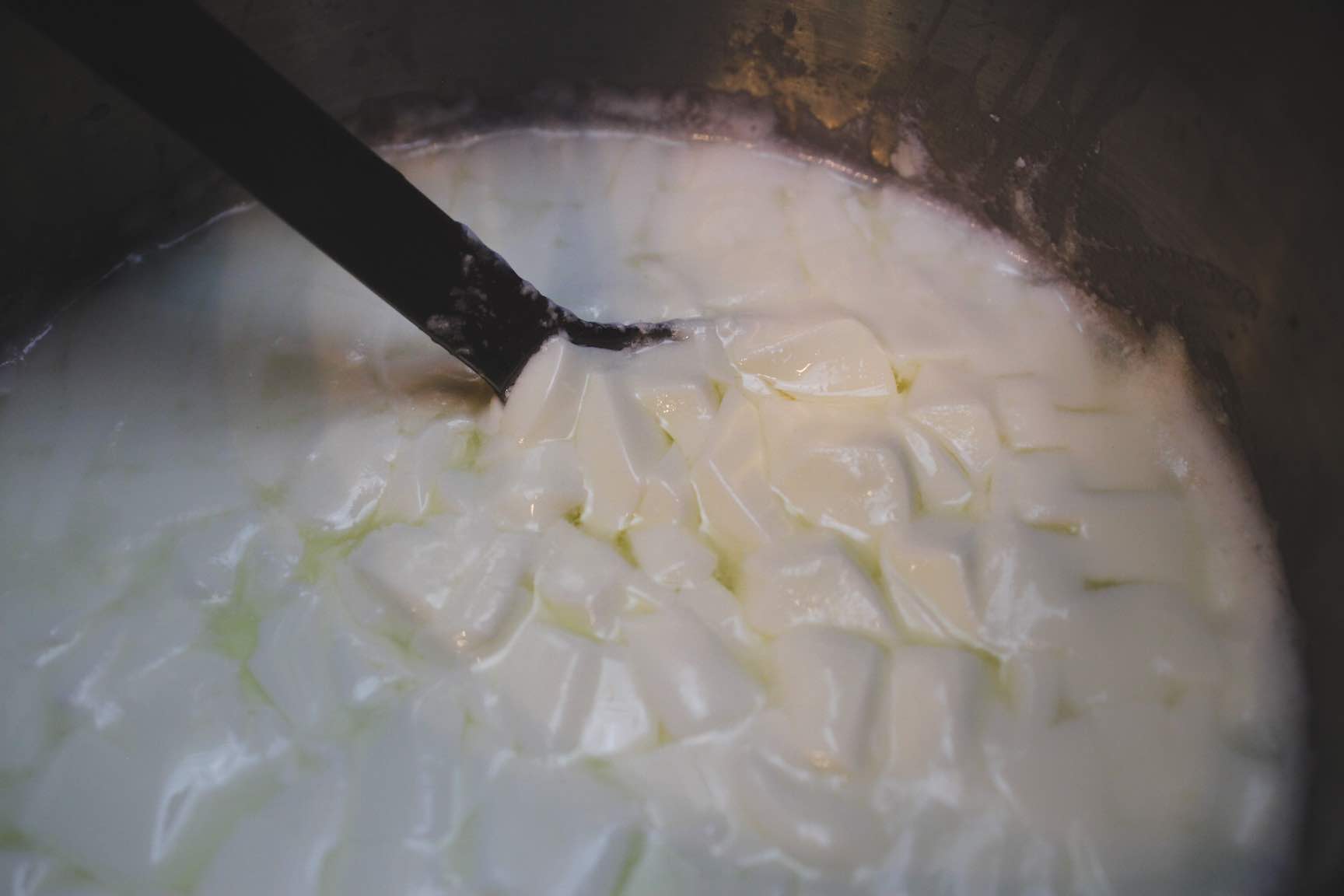
Cut the curd into 3/8 inch cubes.
Place the pot back on the stove, and heat the curds to 110°F. Remove from heat and continue stirring slowly for 2-5 minutes. Stirring for 5 minutes will produce a firmer cheese.
6. Reserve the Whey and Add Cheese Salt

Scoop out the curds with a slotted spoon, and place them in a shallow bowl or pan. Reserve the whey. Press the curds gently with your hands, which will cause whey to run out of them. Pour off as much whey as possible.
This is where you may want to don those heavy gloves. Add 1/4 cup cheese salt to the reserved whey left in the pan, and heat it to 175°F.
7. Shape Curd, Dip in Hot Salted Whey and Knead

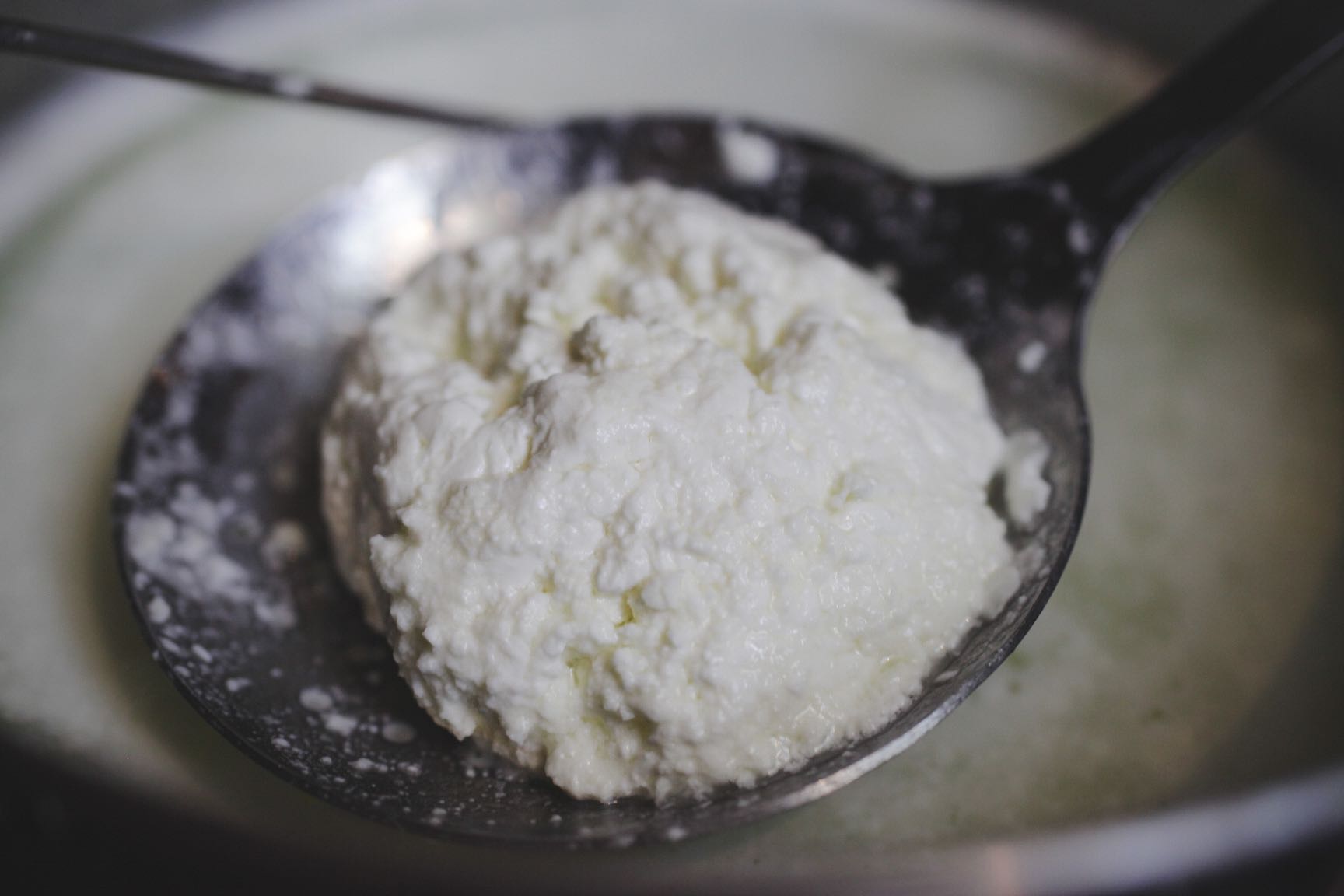
Shape the curd into one or more balls, put them in a ladle or strainer, and dip them into the hot whey for several seconds. Knead the curd with spoons or gloved hands between each dip, and repeat this process several times until the curd is smooth and pliable. The kneading is different than kneading bread dough; a gentler process is used for cheese. It is more like gently folding the curds over and over on themselves, to evenly distribute the heat throughout the curds. As they warm, they become smooth, shiny, almost melted looking. Keep an eye on the whey temp; too cool will not warm the curds sufficiently; too warm will dissolve the curds.
Continue to knead and dip the curds back into the hot salted whey, until the curds have melded into a single, glossy mass, and will stretch like taffy. If the curds break instead of stretching, they may be too cool and need to be reheated.
8. Eat it Warm, Cool it for Later or Even Dress it!
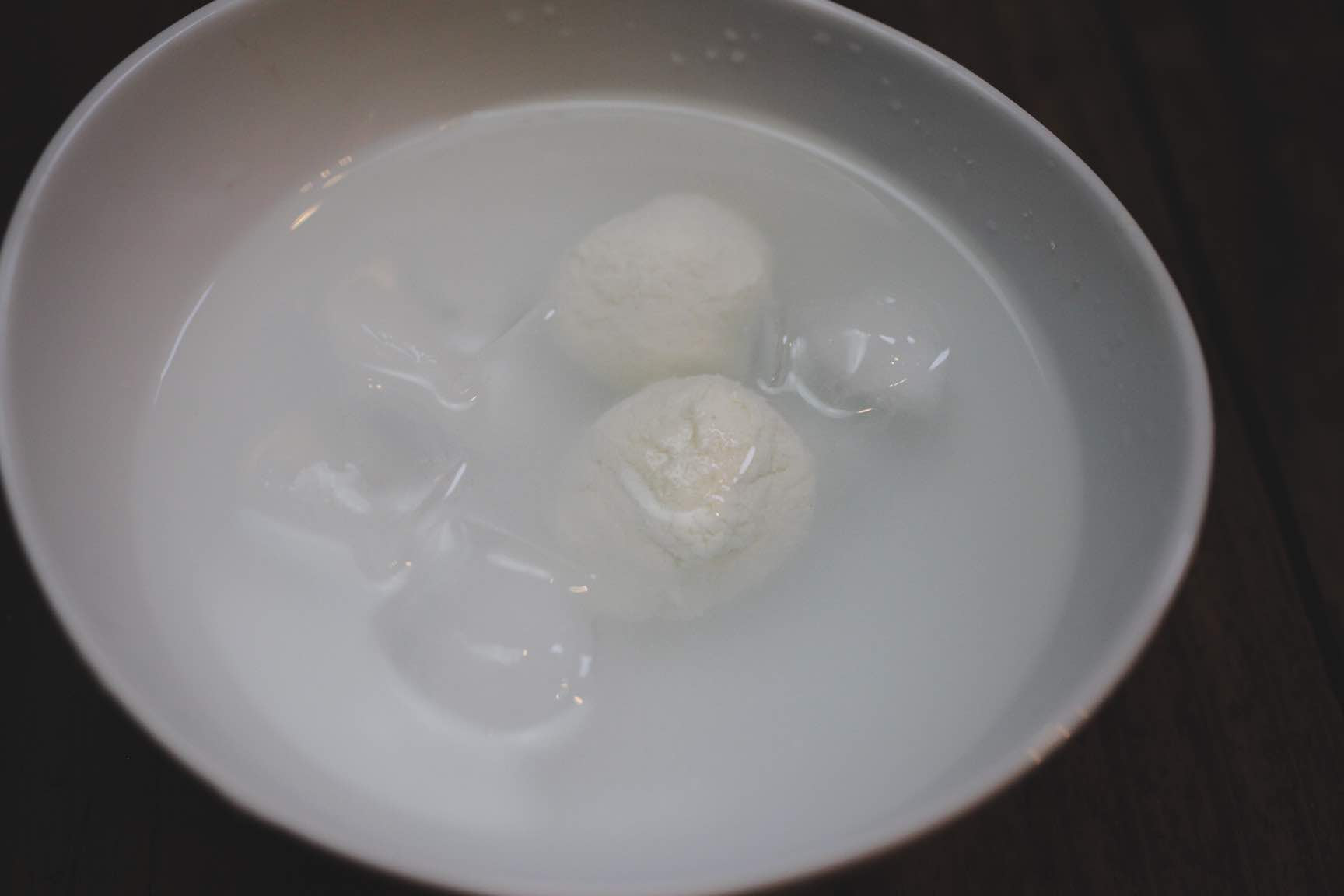
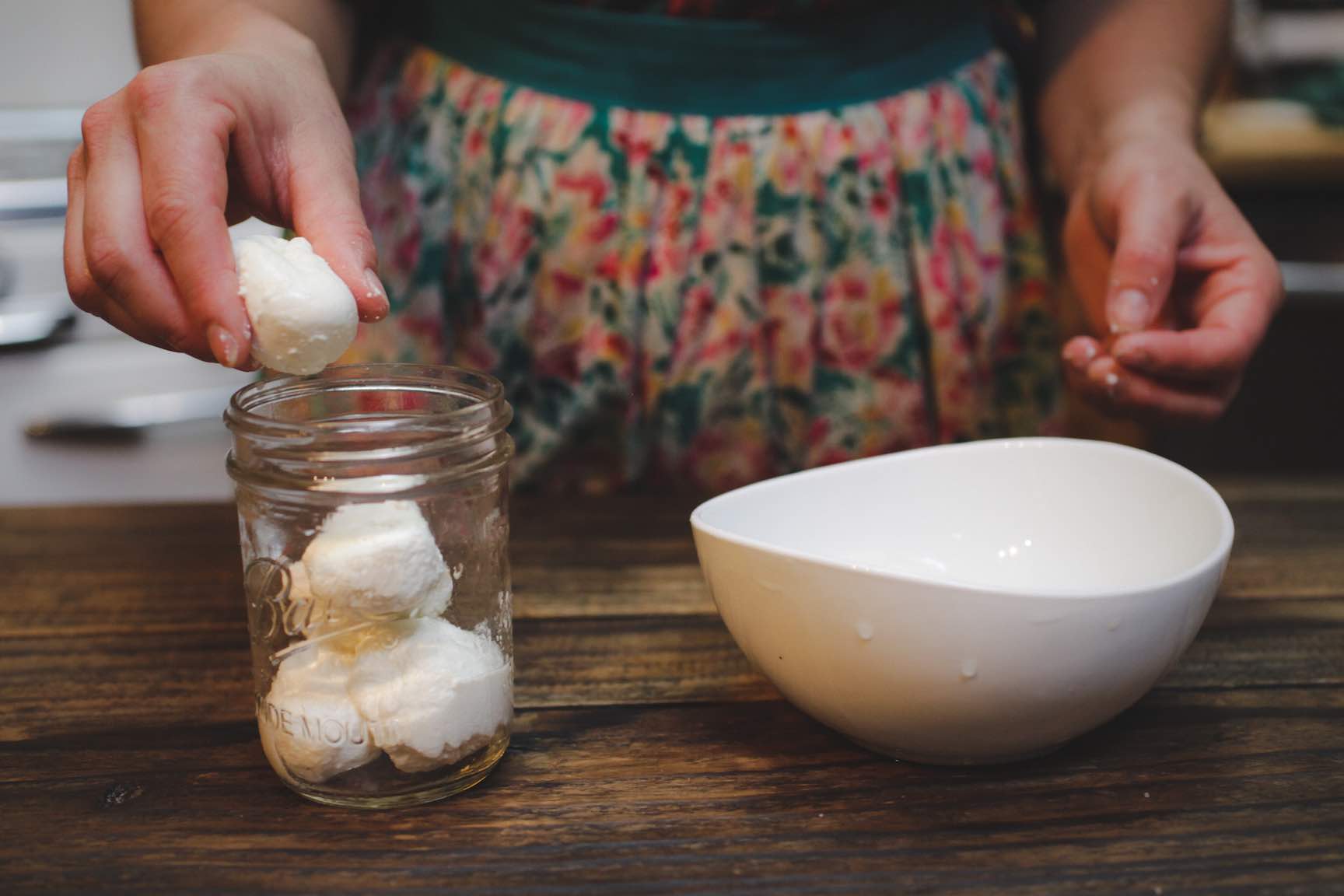
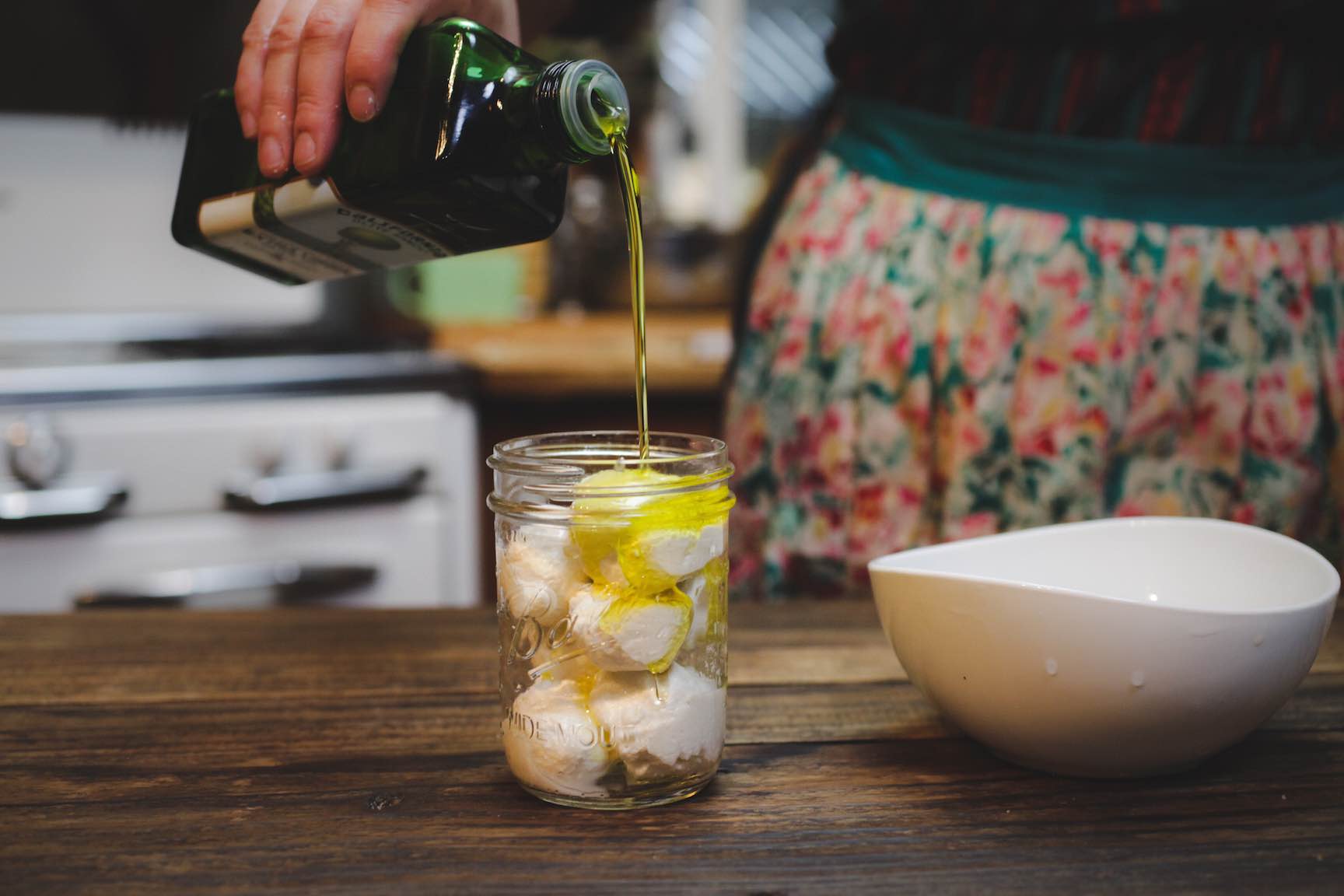
When the cheese is smooth and shiny, roll it into small balls and eat it while warm. Or place them in a bowl of ice water for 1/2 hour to cool them rapidly, which will produce a smooth, consistent texture.
I like to place the cooled balls in a jar and cover them with oil and herbs, to marinate for a few hours before serving. Delicious in pasta, on bruschetta, or with fresh tomatoes and basil.
Note: This cheese is best eaten fresh, within 2 days of making. Cultured mozzarella stores better than the citric-acid versions, but what this recipe lacks in longevity, it makes up for in simplicity!
Over to You
It’s part of our mission here at Mountain Feed to help you make delicious, sustainable, homemade food more often. Stop by and say hello on Facebook, Twitter, Instagram or Pinterest. Or, as always, you can do it the old fashioned way and come by the store to speak with one of our in-house experts.

